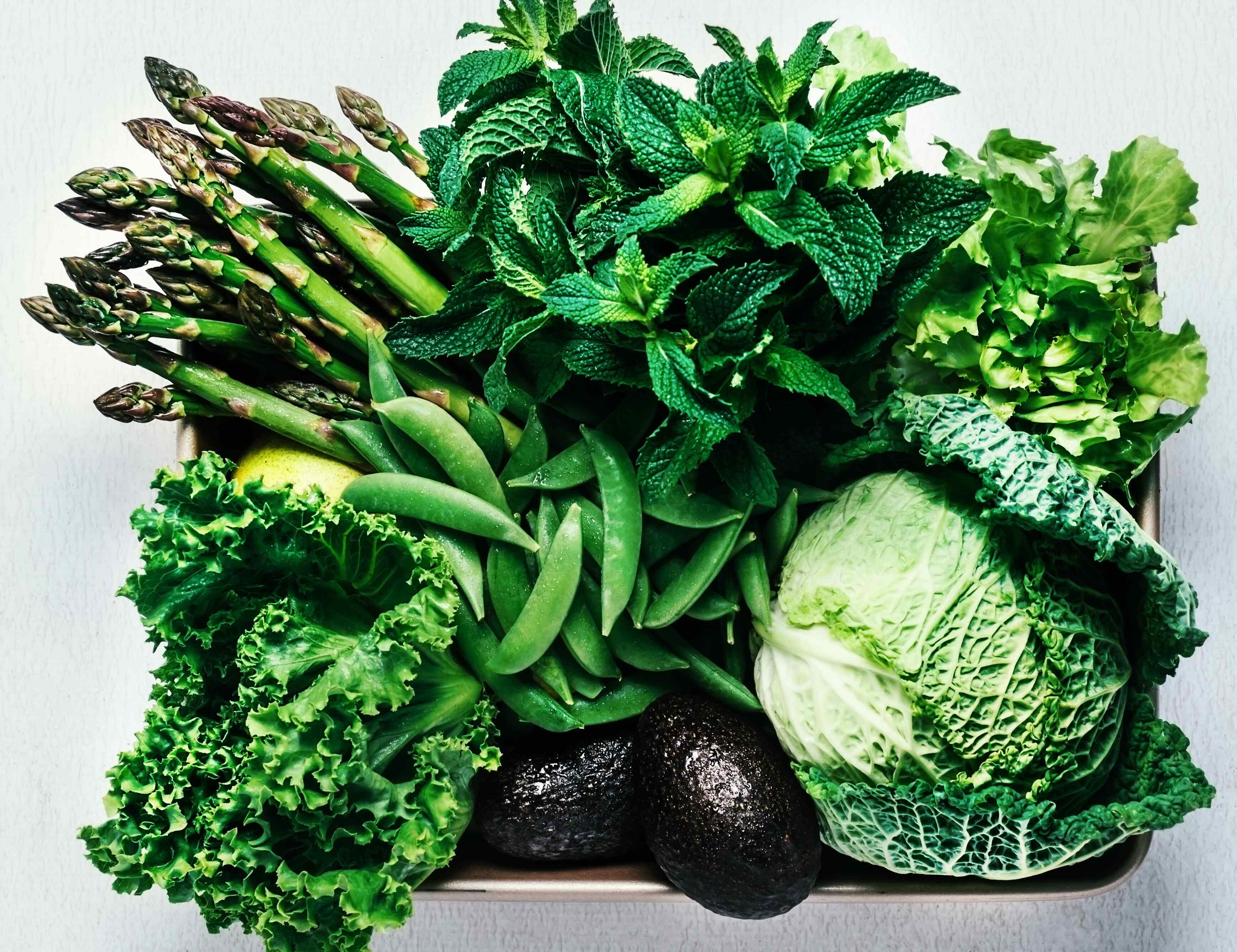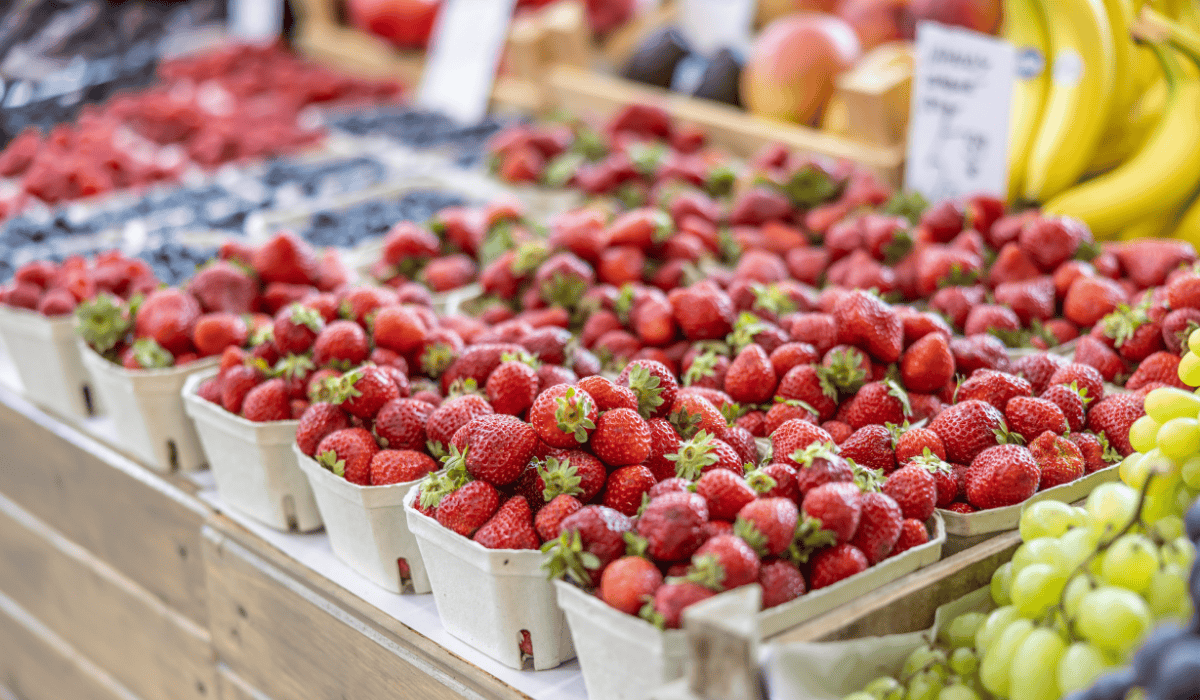
Spring has officially arrived! It’s time to shed our winter coats, enjoy the sunshine, and fill our plates with the bright, delicious flavors of the season.
This time of year isn’t just a feast for the senses—it’s also the perfect opportunity to make compassionate, climate-friendly choices that protect animals and our planet. By choosing plant-based meals made with seasonal fruits and vegetables, you’re helping reduce the demand for animal agriculture, one of the leading causes of animal suffering, deforestation, and climate change.
So, what’s in season right now? Grab your tote bag (maybe the one you got from joining The Wild Side!), head to your local farmers' market or produce aisle, and explore the spring bounty that will have your taste buds—and your values—flourishing.
Fresh Picks: What’s in Season This Spring?
Every region varies a bit, but here are some fruits and vegetables making their debut or reaching their peak in most parts of the Northern Hemisphere. This is not a complete list!
Vegetables

(*Note: our categorization is based on the culinary categories of fruits and vegetables. Many classic ‘veggies’ are actually botanical fruits!)
- Asparagus: A spring staple! Roast it, grill it, or toss it in a pasta salad—asparagus adds a touch of elegance to any dish.
- Artichokes: These spiky beauties might seem intimidating, but once steamed or roasted, they’re tender, flavorful, and totally worth the effort.
- Spinach and other leafy greens: Say hello to iron-packed spinach, arugula, and baby kale. Perfect for smoothies, sautés, or fresh salads.
- Radishes: Add some color and crunch to your plate. Radishes are peppery little gems that brighten any dish.
- Avocados: Creamy, nutrient-rich, and endlessly versatile. Add to toast, salads, dressings, or enjoy them simply with lemon and salt.
- Spring onions and leeks: Mild, sweet, and oh-so-flavorful, these are your go-to seasonings for everything from soups to stir-fries.
- Carrots: Sweet, crunchy, and full of beta-carotene. Enjoy them raw with hummus, roasted in the oven, or shredded into slaws and salads.
- Peas: Snap peas, snow peas, and sweet green peas are bursting with fresh flavor. Add them to risottos or enjoy them raw with hummus.
Fruits

- Strawberries: The classic sign that spring has officially arrived. Slice them into oatmeal, blend them into smoothies, or eat them straight from the basket. (These also grow wonderfully in containers if you can buy a plant!)
- Apricots: Sweet, delicate, and just starting to come into season. Enjoy them fresh, grilled, or dried for a quick snack.
- Rhubarb: Tart and tangy, rhubarb is perfect for crumbles, pies, or compotes—just remember, the leaves are not edible!
- Blackberries: Juicy, slightly tart, and packed with antioxidants. Perfect for breakfast bowls, baking, or snacking.
- Citrus (late-season): Oranges, grapefruits, and lemons are still going strong in early spring, adding a zingy brightness to your meals.
- Pineapple and mango (in warmer climates or imported): Sweet, juicy, and tropical—these make plant-based eating feel like a vacation.
- Apples: While often associated with fall, certain apple varieties are still available in spring, perfect for snacking or baking.
- Lemons: Bright, zesty, and refreshing. Lemons are a great way to add flavor to dressings, marinades, or water.
Why Seasonal, Plant-Based Eating Matters
Eating what’s in season isn’t just tastier—it’s also more sustainable.
Seasonal produce purchased from local growers:
- Requires fewer resources to grow and transport
- Supports local farmers and can help reduce greenhouse gas emissions
- Makes plant-based eating exciting, colorful, and affordable
- Helps reduce the demand for animal products, protecting animals from cruelty and confinement
Bonus tip: Save the vegetable scraps (you can freeze them) to create delicious veggie stock, which will help reduce food waste and save you money. Our friend Carleigh from PlantYou has a step-by-step guide.
Choosing plant-based meals, filled with local and in-season produce, is one of the most impactful ways to reduce our environmental footprint and promote a kinder world for animals.
Want more tips for seasonal plant-based eating? Join Plant Powered Changemakers, our FREE online community for recipes, updates, and ways to take action for animals all year long.
